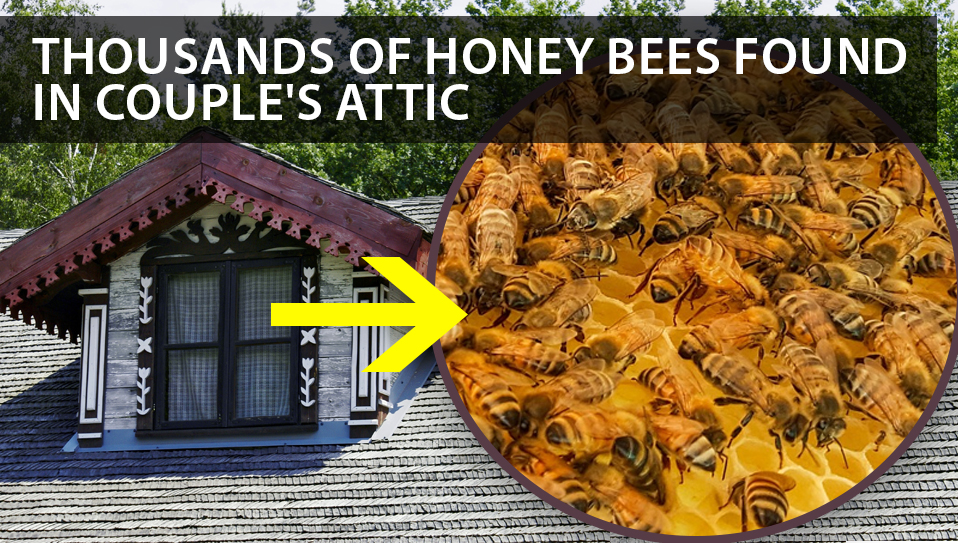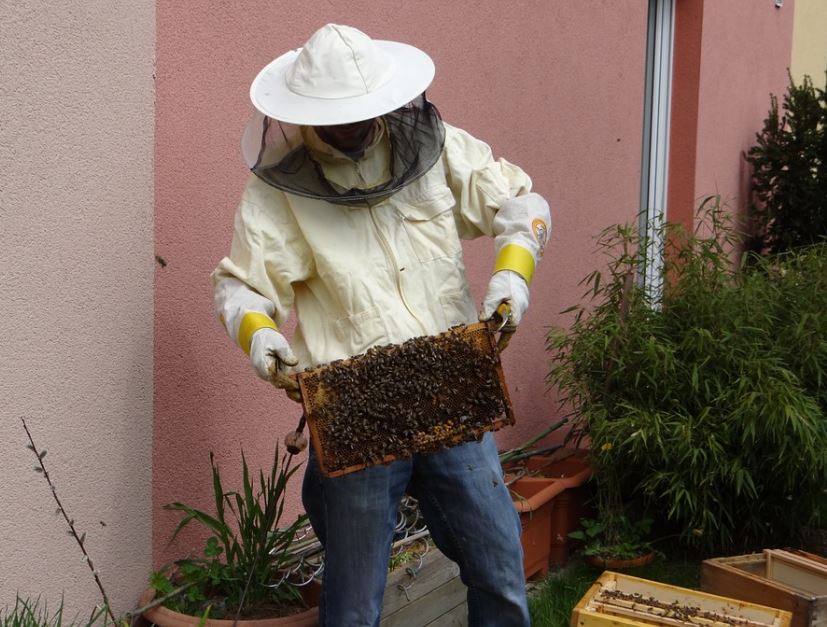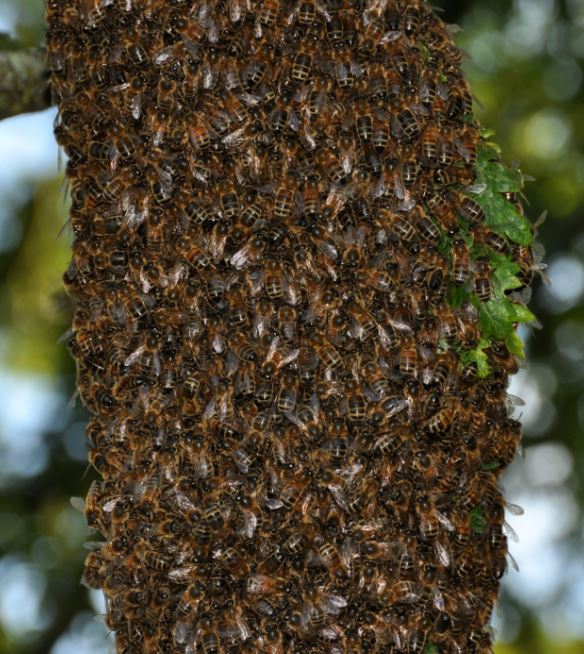Thousands of Honey Bees Found in Couple's Attic

What would you do if you came home one day and found honey seeping down the exterior wall of your house? Sound weird? Well, it is. But that's exactly what happened to a homeowner in Omaha, Nebraska. The homeowner, Becky Reilly, noticed one day that there was honey oozing through the soffit on her house and dripping down the wall. Closer inspection revealed bees coming and going from the soffit and a follow-up inspection inside the house revealed thousands of honey bees in Ms. Reilly's attic. While Reilly was taken back by the scale of the infestation ("It's just so strange to know we had thousands of bees in our attic," she said) and knew she'd have to have the massive hive removed. She was also concerned that any removal effort would harm the bees.
Relocating Thousands of Honey Bees
Reilly put out calls to both a roofing contractor and a beekeeper. Together, they devised a plan that would remove the bees safely and relocate them to the beekeeper's garage. There, they would live out the winter in hibernation. The roofer and beekeeper worked together to execute the plan which included removing the hive, the bees and 40 pounds of honey.

It was a painstaking process during which some of the bees inevitably lost their lives. However, everyone was satisfied that as many as could be saved, were saved. Next year when the weather warms up Reilly and the beekeeper will relocate the colony to a new hive the keeper will set up in Reilly's yard. For now, Reilly has her house back (although the soffit and some siding will need to be replaced), the bees are in hibernation in the safety of the keeper's garage, and there was plenty of honey to sweeten everyone's holidays.
How Did it Come to This?

While everyone likes a feel-good story with a happy ending, this particular tale comes with a common but rather large question attached to it: Why did the bees choose Ms. Reilly's home when there were so many other worthy houses in the neighborhood? Was it pure serendipity or was there something bigger at work; a sort of hive logic that typically eludes us humans who have other things to worry about? To find the answer let's take a look at what scientists have to say about the matter.
Why Do Some Homes Have Honey Bees in the Attic?
Just how honey bees choose a house for their hive has long been a mystery. Frankly, most people who study such things were under the impression that it was a more or less random process with one scout bee finding a cozy house or tree and sending word back to bring the family. New studies, however, suggest there's way more collective decision making going on behind the scenes than anyone imagined and that deciding on which tree or house represents the best match is a matter of weighing the alternatives and selecting the one with the most deluxe bee-friendly features.

How Do They Do That?
Every spring, a large group from an existing colony of honey bees splits off from the main group and sets out to establish a colony of their own. Previously, it was thought they only did so after word came back from the aforementioned scout that a suitable location had been found. So the process, in a nutshell, was thought to be: scout finds a friendly hole in homeowner's soffit, brings word back to those masses waiting to emigrate, masses move to the new digs to set up house.

The new information, however, indicates it's not quite so straightforward. It seems that everybody who will be part of the new hive leaves the existing one together, including scouts. The mass of honey bees then finds a safe place to wait and the scouts set out to canvas the area. Each scout finds a potentially suitable location and then returns to the waiting group and reports his findings by doing what has become known as the "waggle dance." The waggle dance is the method by which the scout reports the quality of his find. If he's really sold on it, the waggle dance will be hyper-energetic. If he likes it, but is not certain it's the best possible choice, he'll do a shorter, less energetic dance.
Each of the scouts perform their dance, transmitting their impression of the site they’ve found. The group takes in all this information and the individual honey bees then decide which site they think is best. Once a certain site reaches a critical mass of support, the bees that supported other sites cave to the will of the majority and everyone heads for the winning site. It's a remarkable combination of individual and collective thought, just as you'd expect in any human colony where options are presented and majority decisions win the day.
The Dreaded Deadlock
Not all of these caucus-like events end harmoniously for honey bees, however. Sometimes there's the equivalent of a tie. When this happens, the scouts lose their sense of decorum and try to take out the competition. One scout, for instance, might attack a competing bee, giving the other bee the equivalent of a headbutt in an effort to disrupt his waggle dance long enough to win more followers for his own site. Things can get ugly for a few moments but typically as soon as one gains even a tiny advantage over the other the decision is made, and the group falls in line behind the winning site. In the case outlined above, that would have been Ms. Reilly's house.
If you happen to find honey bees in the attic keep in mind that they're there because they're impressed with your digs and decided that your house, like Ms. Reilly's, was the best choice in the area. In a sense, it's kind of flattering. Plus, thousands of honey bees means you get a bunch of free honey.

